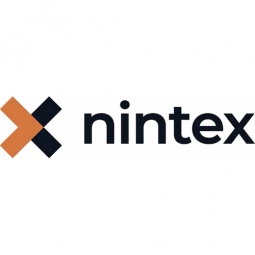适用行业
- 食品与饮料
- 医疗保健和医院
用例
- 现场人员安全管理
服务
- 培训
关于客户
阿瓦拉食品公司是英国最大的食品企业之一,为英国一些最大的超市和连锁餐厅供应家禽产品。该公司经营着七家食品加工厂、六家孵化场、三家家禽饲料生产厂以及 100 个自有和分包农场。 20 多年来,Avara Foods 一直在使用 K2 软件来简化流程并持续提高业务效率。该公司拥有 7,000 名员工,致力于改善整个运营过程中的健康和安全。
挑战
阿瓦拉食品公司是英国最大的食品企业之一,该公司正在努力解决劳动密集型、纸质的健康和安全报告流程。该公司的健康和安全团队的任务是管理农场、工厂和办公区域内的事故风险。他们依靠纸质表格和 Excel 来收集、分析和降低事故风险。然而,随着业务的扩展,独立的纸质系统的数量也随之增加,使得管理所需的干预措施变得越来越困难。整合各个地点的健康和安全风险视图花了几天时间。与另一家食品企业的合并使情况变得更加复杂,需要对所采用的流程和系统进行全面审查。
解决方案
Avara Foods 求助于 Nintex K2 Five 来实现其健康和安全报告流程的数字化和自动化。该公司用数字表格、自动化工作流程和集中报告仪表板取代了纸质流程。创建了急救事件报告的标准化方法,该方法可在该组织的 7 个食品加工厂、6 个孵化场、3 个工厂以及 100 个自有和分包农场中使用。员工以数字形式记录任何事件的详细信息,然后以电子方式传递给直线经理和健康与安全经理进行审查和批准。基于 Nintex K2 Five 的流程使 Avara Foods 能够在数字仪表板上监督整个企业的所有急救事件。该公司现在可以在健康和安全活动中使用 Nintex K2 Five 仪表板来监控其干预措施的影响。
运营影响
数量效益

Case Study missing?
Start adding your own!
Register with your work email and create a new case study profile for your business.
相关案例.

Case Study
The Kellogg Company
Kellogg keeps a close eye on its trade spend, analyzing large volumes of data and running complex simulations to predict which promotional activities will be the most effective. Kellogg needed to decrease the trade spend but its traditional relational database on premises could not keep up with the pace of demand.

Case Study
HEINEKEN Uses the Cloud to Reach 10.5 Million Consumers
For 2012 campaign, the Bond promotion, it planned to launch the campaign at the same time everywhere on the planet. That created unprecedented challenges for HEINEKEN—nowhere more so than in its technology operation. The primary digital content for the campaign was a 100-megabyte movie that had to play flawlessly for millions of viewers worldwide. After all, Bond never fails. No one was going to tolerate a technology failure that might bruise his brand.Previously, HEINEKEN had supported digital media at its outsourced datacenter. But that datacenter lacked the computing resources HEINEKEN needed, and building them—especially to support peak traffic that would total millions of simultaneous hits—would have been both time-consuming and expensive. Nor would it have provided the geographic reach that HEINEKEN needed to minimize latency worldwide.

Case Study
Hospital Inventory Management
The hospital supply chain team is responsible for ensuring that the right medical supplies are readily available to clinicians when and where needed, and to do so in the most efficient manner possible. However, many of the systems and processes in use at the cancer center for supply chain management were not best suited to support these goals. Barcoding technology, a commonly used method for inventory management of medical supplies, is labor intensive, time consuming, does not provide real-time visibility into inventory levels and can be prone to error. Consequently, the lack of accurate and real-time visibility into inventory levels across multiple supply rooms in multiple hospital facilities creates additional inefficiency in the system causing over-ordering, hoarding, and wasted supplies. Other sources of waste and cost were also identified as candidates for improvement. Existing systems and processes did not provide adequate security for high-cost inventory within the hospital, which was another driver of cost. A lack of visibility into expiration dates for supplies resulted in supplies being wasted due to past expiry dates. Storage of supplies was also a key consideration given the location of the cancer center’s facilities in a dense urban setting, where space is always at a premium. In order to address the challenges outlined above, the hospital sought a solution that would provide real-time inventory information with high levels of accuracy, reduce the level of manual effort required and enable data driven decision making to ensure that the right supplies were readily available to clinicians in the right location at the right time.

Case Study
Gas Pipeline Monitoring System for Hospitals
This system integrator focuses on providing centralized gas pipeline monitoring systems for hospitals. The service they provide makes it possible for hospitals to reduce both maintenance and labor costs. Since hospitals may not have an existing network suitable for this type of system, GPRS communication provides an easy and ready-to-use solution for remote, distributed monitoring systems System Requirements - GPRS communication - Seamless connection with SCADA software - Simple, front-end control capability - Expandable I/O channels - Combine AI, DI, and DO channels

Case Study
Energy Management System at Sugar Industry
The company wanted to use the information from the system to claim under the renewable energy certificate scheme. The benefit to the company under the renewable energy certificates is Rs 75 million a year. To enable the above, an end-to-end solution for load monitoring, consumption monitoring, online data monitoring, automatic meter data acquisition which can be exported to SAP and other applications is required.








